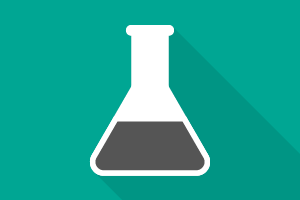Classroom Resources: Energy & Thermodynamics
Filter by:
1 – 25 of 34 Classroom Resources
-

Renewable Energy, Heat, Temperature, Specific Heat, Interdisciplinary, Graphing | Middle School, High School
Lesson Plan: Solar Cookers
In this lesson, students will learn about the use of alternative cooking fuels that could replace burning wood, coal, or other smoke-producing materials to heat and cook food in developing nations, focusing on solar cookers. They will watch a video and read an article that provide a general overview of the need for alternative fuels. Then, in small groups, students will research, design, build, and test a solar cooker to determine if it is an effective method of cooking food in a developing nation. They will give a presentation to the class on their design, test results, and any improvements they would make to their initial design, and they will answer some reflection questions about the solar cookers made by their class and their role in the group project.
-

Colligative Properties, Boiling Point Elevation, Freezing Point Depression, Concentration, Solute & Solvent, Boiling Point, Freezing Point, Phase Changes, Molecular Motion, Graphing, Physical Properties, Heat, Temperature | Middle School, High School
Activity: Simulation Activity: The Effect of Solutes on Boiling and Freezing Point
In this activity, students will use a colligative properties simulation to investigate the effects of different solutes, and different amounts of those solutes, on the boiling point and freezing point of a solution. Students will see particle-level animations of boiling and freezing with different types and amounts of solutes, as well as graphical representations of the results of each trial.
-

Heat of Vaporization , Boiling Point, Intermolecular Forces, Phase Changes, Heating Curve, Heat of Combustion, Temperature, Specific Heat, Observations, Chemical Change, Physical Change | Middle School, High School
Demonstration: Cooking an Egg in Chemistry Class
In this demonstration, students will observe the very high latent heat of vaporization for water by boiling water over a Bunsen burner in a paper cup to cook a boiled egg. The discussion can be extended to incorporate intermolecular forces to explain the unusually high boiling point of water, as well as heat of vaporization and specific heat capacity.
-

Exothermic & Endothermic, Temperature, Heat of Combustion, Chemical Change | Middle School
Lesson Plan: Chemical Volcanoes - A Tale of Two Reactions
In this lesson, students will use volcanoes as a vehicle to learn about the differences between endothermic and exothermic reactions by completing a hands-on activities and observing a teacher-led demonstration.
-

Specific Heat, Heat, Temperature, Experimental Design | Middle School, High School
Activity: Simulation Activity: Understanding Specific Heat
In this simulation, students will play the role of engineer in deciding which materials are the best candidates for a building project. They will calculate the specific heat capacity of various building materials to determine which ones meet the criteria for building an energy efficient home. Students will also do a cost analysis to determine which material to use in their building project. On the student activity sheet, they will answer additional conceptual and numerical questions related to specific heat capacity.
-

Heat, Temperature, Exothermic & Endothermic | Middle School, High School
Lab: Energy Transfer Investigation
In this lab, students will experience several examples of energy transfer. They will analyze their observations and interpret their results in an attempt to explain why each transfer took place.
-

Molecular Structure, Molecular Geometry, Polymers, Electronegativity, Heat, Temperature, Electricity | Middle School, High School
Activity: Future of Paint Video Questions
In this activity, students will watch a video and answer related questions about the fascinating and innovative scientific advancements of paint. During the video, Students will learn how the molecular components in paint are helping to evolve in the world around them.
-

Radiation, Electromagnetic Spectrum, Heat, Temperature, Experimental Design, Graphing, Interdisciplinary | Middle School, High School
Lesson Plan: The Ozone Layer
In this lesson, students will develop an explanation for the consequences of ozone depletion on Earth by planning and carrying out an investigation. Students will use analysis and interpretation of data to develop a model to explain the cause and effect of Ozone depletion on the planet Earth.
-

Temperature, History, Physical Properties, Measurements, SI Units, Accuracy | Elementary School, Middle School, High School
Activity: Temperature Guys Video Questions
In this activity, students will watch a video and answer questions about how both the thermometer and the concept of temperature evolved over time
-

Kinetic Molecular Theory, Temperature, Heat, Temperature | Middle School, High School
Lab: Mega Marshmallows
In this lab, students will investigate the Kinetic Molecular Theory and particle motion while experimenting with a marshmallow. Students will observe how an increase in kinetic energy will cause particles to increase in motion. This concept will be extended into a discussion about additional real world thermal expansion examples.
-

Temperature, Heat, Temperature | Elementary School, Middle School
Demonstration: An Uplifting Experience
In this demonstration, students will investigate what happens to air when it is heated.
-

Molecular Structure, Molecular Geometry, Polymers, Electronegativity, Heat, Temperature, Electricity | Middle School, High School
Video: The Future of Paint Video
This video explores the fascinating and innovative scientific advancements of paint. Students will learn how the molecular components in paint are helping to evolve in the world around them. Futuristic paint is capable of replacing light switches, conducting electricity, and regulating temperature amongst other things!
-

Exothermic & Endothermic, Heat, Temperature, Classification of Reactions | Middle School, High School
Lab: Determining Endothermic and Exothermic Reactions
In this lab, students will analyze evidence to determine if a chemical reaction releases energy and can be classified as an exothermic reaction or if it absorbs energy and can be classified as an endothermic reaction.
-

Exothermic & Endothermic, Classification of Reactions, Energy Diagrams, Bond Energy, Activation Energy, Temperature, Chemical Change | Middle School, High School
Activity: Simulation Activity: Energy Changes in Chemical Reactions
In this simulation, students will evaluate the energy changes in an endothermic and an exothermic chemical reaction. Through the use of this simulation students will have the opportunity to compare how energy is absorbed and released in each reaction. Additionally, students will make a connection between the standard energy diagrams associated with each reaction type.
-

Temperature, History, Accuracy, Physical Properties | Elementary School, Middle School, High School
Video: The Temperature Guys Video
This video tells the story of how temperature as we currently know it evolved. The first thermometers invented in the early 1600s are very different than ones we use today!
-

Heat, Temperature, Specific Heat, Observations, Molecular Motion | High School, Middle School
Activity: What Makes Something Feel Warm
In this lesson students actively engage in thinking about energy issues in chemistry and the nature of energy (thermal) transfer. The idea that temperature is a measure of heat content will be challenged, and students will be given the opportunity to collect data that will allow them to clearly see that different materials transfer energy at different rates.
-

Temperature, Molecular Motion, Observations, Inferences | High School, Middle School
Demonstration: What is Temperature?
In this demonstration, students will observe food dye mixing with water at different temperatures.
-

Freezing Point, Phase Changes, Temperature, Physical Change | Middle School
Lab: Lemon Ice
This activity explores the interaction between salt and water (ice) as a way to further investigate their impact on the state of matter of a substance. Students will use salt and ice to create a slushy lemonade drink without the use of a freezer. They will learn through this hands-on experiment how salt and ice can rapidly cool a liquid.
-

Conservation of Mass, Exothermic & Endothermic, Chemical Change, Heat, Temperature, Observations, Chemical Change | High School, Middle School
Lab: Kitchen Reaction
In this lab students will observe an endothermic chemical reaction involving baking soda (sodium bicarbonate) and vinegar (acetic acid). Students will investigate the signs a chemical reaction has occurred (gas production, change in temperature). Students will perform the lab in an open system so they can see the change of mass due to gas production. This lab is a lead into the topic of conservation of mass. After the lab is completed, the teacher should do a demonstration of the exothermic reaction Hydrogen peroxide and potassium iodide.
-

Calorimetry, Specific Heat, Heat, Temperature | High School, Middle School
Lab: Understanding Specific Heat
In this lab, students will get a general idea of specific heat by investigating the mixing of two liquids at different temperatures. In one case, the same liquids will be mixed, in another case different liquids will be mixed.
-

Heating Curve, Phase Changes, Intermolecular Forces, Freezing Point, Melting Point, Boiling Point, Heat of Fusion, Heat of Vaporization , Molecular Motion, Temperature, Heat, Specific Heat | High School, Middle School
Activity: Simulation Activity: Heating Curve of Water
In this simulation, students will investigate qualitatively and quantitatively what happens as water changes states.
-

Temperature, History, Interdisciplinary, Chemical Change, Temperature, Heat | Middle School, High School
Lab: Greenhouse Gas Simulation
In this lab, students will create two simulations of the Earth’s atmosphere. They will compare a control model with a one that has an increased presence of carbon dioxide gas in order to analyze how this effects temperature. They will also complete research in order to learn more about the makeup of the Earth’s atmosphere.
-

Reaction Rate, Graphing, Temperature, Concentration | High School, Middle School
Lab: Starch-Iodine Clock Reaction
In this lab, students perform an iodine clock reaction to determine how concentration and temperature effect the reaction rate.
-

Exothermic & Endothermic, Heat, Specific Heat, Temperature, Enthalpy, Calorimetry, Observations, Inferences | High School, Middle School
Demonstration: Energy in Hot and Cold Packs
In this demonstration, students will observe temperature changes in chemical hot and cold packs and discuss processes of endothermic and exothermic changes. They will also see that common household products can be used to make a hot and cold pack.
-

Exothermic & Endothermic, Physical Change, Temperature, Freezing Point, Boiling Point | High School, Middle School
Demonstration: Energy
In this demonstration, students will observe the exothermic and endothermic properties of state changes of substances with different freezing and boiling points.
Filtered By
Subtopics: ✖ Temperature
Grade Level: ✖ Middle School
Clear All Filters